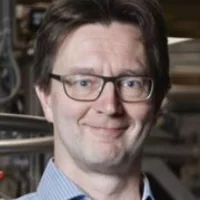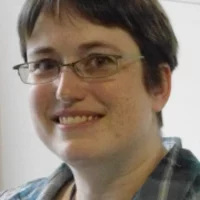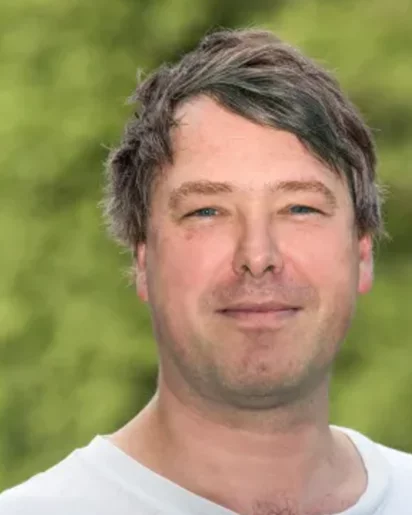Biography
Steven Van Petegem is a senior scientist in the Structure and Mechanics of Advanced Materials (SMAM) group at the Paul Scherrer Institute (PSI). He obtained his degree in Physics from Ghent University, Belgium, where his PhD research focused on the microstructure of nanocrystalline metals studied with positron annihilation spectroscopy combined with modeling.
He joined PSI in 2003, initially working at the Small Angle Neutron Scattering instrument in the Center for Neutron and Muon Sciences. In 2005, he moved to the Materials Science and Simulations group, where he investigated deformation mechanisms in metals using in situ diffraction techniques. From 2008 to 2015, he was responsible for the POLDI neutron diffractometer, leading experiments on time-resolved mechanical behavior of engineering materials.
In 2015, Van Petegem became part of the Photons for Engineering and Manufacturing group in the Center for Photon Science, with a focus on process–microstructure–property relationships in metallic systems. Since 2021, he has been a member of the SMAM group, where his research combines in situ and operando X-ray and neutron methods to study materials under thermo-mechanical processing and additive manufacturing conditions.
Institutional responsibilities
Within the SMAM group, Steven Van Petegem leads his own sub-group, where he supervises PhD students and postdoctoral researchers. The team carries out advanced diffraction and imaging experiments at large-scale research facilities, with a particular focus on the Swiss Light Source, but also at the Swiss Spallation Neutron Source and other international facilities. In this context, he is responsible for the developement of new experimental methods that expand the possibilities for in situ and operando studies of materials under realistic processing and loading conditions.
He represents the Center for Photon Science (CPS) in the task force Offices and Laboratories, which advises the Steering Committee for Environment and Energy. He regularly serves as a member of beam time allocation panels, contributing to the evaluation of scientific proposals at synchrotron and neutron sources. In addition, he contributes to outreach as a tour guide at the Paul Scherrer Institute and teaches the Master’s course Materials Science at Large-Scale Facilities at EPFL. He also serves on the editorial board of the journal Strain.
Scientific Research
Van Petegem’s research focuses on the use of in situ and operando X-ray and neutron diffraction and imaging to uncover how the internal structure of metals evolves during thermo-mechanical processing or additive manufacturing. By observing materials directly under relevant conditions, his work provides unique insights into the microscopic mechanisms that govern mechanical properties and performance.
Earlier in his career, Van Petegem made significant contributions to the understanding of size effects in plasticity. He studied plastic deformation in nanocrystalline metals, thin films, and single-crystal micropillars, providing fundamental insights into how deformation mechanisms change when dimensions are reduced to the micro- and nanoscale. Building on this foundation, he has explored the response of metals under more complex loading states. Using advanced diffraction techniques, he investigated the evolution of lattice strains, dislocation activity, and grain-scale interactions during uniaxial, biaxial, and shear deformation. These experiments provide essential benchmarks for validating advanced simulation approaches such as molecular dynamics and crystal plasticity modeling.
In more recent years, he has extended these efforts to the field of laser-based additive manufacturing. Operando diffraction and imaging have made it possible to follow solidification dynamics, defect formation, and residual stress development directly during printing. Such studies shed light on the fundamental origins of cracking and porosity, helping to guide the design of alloys and processing routes for more reliable 3D-printed metals.
By combining state-of-the-art experiments with modeling, his research bridges fundamental materials science and technological applications. The overarching goal is to establish knowledge-based strategies for tailoring microstructures and properties through processing.
Selected Publications
For an extensive overview we kindly refer you to our publication repository DORA
Steel-Copper Multi-materials: Deconvoluting Cracking Mechanisms During Fusion Processing
Özsoy S, Hearn WA, Gaudez S, Jeswani R, Chen Y, Rack A, Hegedüs Z, Casati N, Logé RE, Van Petegem S
Virtual and Physical Prototyping 20, e2526798 (2025).
This work investigates the origins of cracking in steel–copper multimaterials during fusion-based additive manufacturing. By combining synchrotron imaging with careful analysis, it disentangles the competing mechanisms of solidification cracking and liquation cracking. The insights guide strategies to design more reliable multi-material joints in AM.
Additive manufacturing of alloys with programmable microstructure and properties
Gao SB, Li Z, Van Petegem S, Ge JY, Goel S, Vas JV, Luzin V, Hu ZH, Seet HL, Sanchez DF, Van Swygenhoven H, Gao HJ, Seita M
Nature Communications 14, 6752 (2023).
This study demonstrates how additive manufacturing can be exploited not just to shape components but also to “program” their microstructure and properties. By tuning printing strategies, the same alloy can achieve either ultra-high strength or improved ductility. The work establishes a paradigm for designing alloys whose performance can be tailored to application needs directly through processing.
Operando tomographic microscopy during laser-based powder bed fusion of alumina
Makowska MG, Verga F, Pfeiffer S, Marone F, Chang CST, Florio K, Schlepütz CM, Wegener K, Graule T, Van Petegem S
Communications Materials 4, 73 (2023).
Here, operando synchrotron tomography was used to watch how pores and defects form inside alumina during laser powder bed fusion. The ability to directly observe the dynamic defect evolution provides crucial understanding of why ceramic AM remains challenging. These insights are a step toward optimizing processing windows for defect-free ceramic printing.
Operando X-ray diffraction during laser 3D printing
Hocine S, Van Swygenhoven H, Van Petegem S, Chang CST, Maimaitiyili T, Tinti G, Sanchez DF, Grolimund D, Casati N
Materials Today 34, 30–37 (2020).
This was the first demonstration of time-resolved X-ray diffraction during metal 3D printing. The work revealed how phase transformations and residual stresses develop in real time under rapid heating and cooling conditions. Such insights are essential for designing alloys and processes that avoid cracking and ensure predictable performance.
A Miniaturized Biaxial Deformation Rig for in Situ Mechanical Testing
Van Petegem S, Guitton A, Dupraz M, Bollhalder A, Sofinowski K, Upadhyay MV, Van Swygenhoven H
Experimental Mechanics 57, 569–579 (2017).
This paper introduces a compact biaxial deformation device tailored for synchrotron X-ray studies. The rig enables simultaneous loading along two axes, making it possible to study realistic multiaxial stress states in small samples. This tool significantly expands the experimental capabilities for probing material behavior under complex loading.
In-situ neutron diffraction during biaxial deformation
Van Petegem S, Wagner J, Panzner T, Upadhyay MV, Trang TTT, Van Swygenhoven H
Acta Materialia 105, 404–410 (2016).
Using in-situ neutron diffraction, this study examined stress evolution in metals under biaxial loading. The results provided direct evidence for how grains reorient and accommodate strain when loaded along two axes. These findings help to refine models of plasticity under complex, real-world stress conditions.
On the Microstructure of Nanoporous Gold: An X-ray Diffraction Study
Van Petegem S, Brandstetter S, Maass R, Hodge AM, El-Dasher BS, Biener J, Schmitt B, Borca C, Van Swygenhoven H
Nano Letters 9, 1158–1163 (2009).
Nanoporous gold is a model system for understanding structure–property relationships at the nanoscale. This work used X-ray diffraction to link ligament size and microstructural features to mechanical response. It showed how nanoscale morphology governs strength and stability, providing general lessons for other nanoporous metals.
Time-resolved laue diffraction of deforming micropillars
Maass R, Van Petegem S, Van Swygenhoven H, Derlet PM, Volkert CA, Grolimund D
Physical Review Letters 99, 145505 (2007).
This paper pioneered time-resolved Laue diffraction on deforming single-crystal micropillars. The technique captured dislocation motion and stress evolution at the microscale with unprecedented temporal resolution. These results advanced the field of small-scale plasticity by providing direct evidence of how individual crystals deform.
Plastic deformation with reversible peak broadening in nanocrystalline nickel
Budrovic Z, Van Swygenhoven H, Derlet PM, Van Petegem S, Schmitt B
Science 304, 273–276 (2004).
A landmark paper in nanomaterials, this study discovered that nanocrystalline nickel exhibits reversible peak broadening during deformation. This surprising behavior challenged conventional models of plasticity, revealing new mechanisms of strain accommodation at the nanoscale. It reshaped the field’s understanding of nanocrystalline metals.


